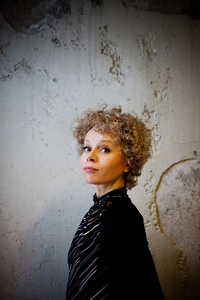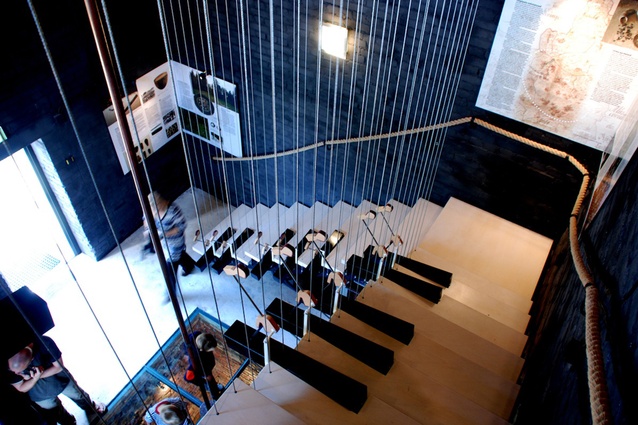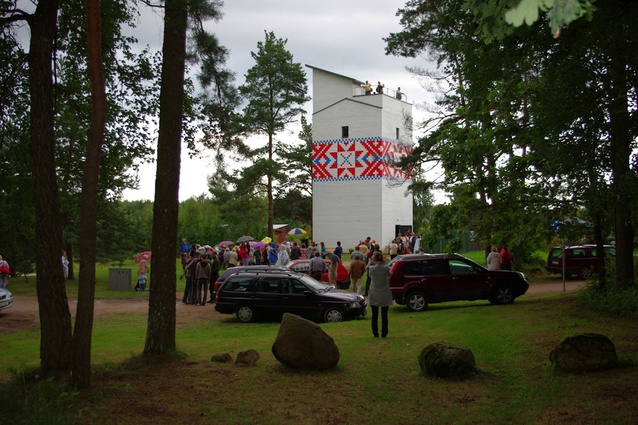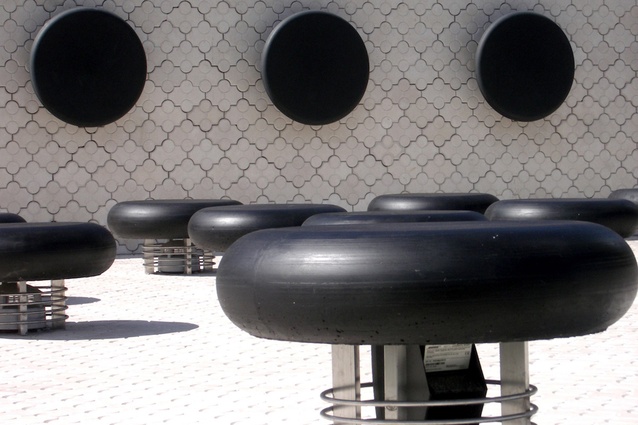Veronika Valk of Zizi & Yoyo
New Zealand students Vanessa Coxhead and Michael Strack spoke to Veronika after her wide-reaching presentation at the 2015 Australasian Student Architecture Congress in Melbourne, and attempted to scratch at the surface of some of the ideas that bubble underneath her work as a practitioner, academic and advisor.

Vanessa Coxhead and Michael Strack: Thanks for sharing your really fascinating views of how you approach architecture, the profession, places and people. Estonia must be a really interesting place to live and work, especially after release from the Soviet Union started generating huge architectural changes in the country such as new public spaces around waterfronts opening up.
As a young practitioner confronted with these changes, being asked to develop architectural installations or temporary structures, how did you understand the situation? How did you approach the project?
Veronika Valk: It came about when I started the work on my own, on a really grassroots level working from the bottom up. Installations were my tool. To rewrite the area, to rewrite the experience of the area for the people because of what it allows — it’s a beautiful tool, installations — the temporality…
VC and MS: And so most of them were temporary? Around for a couple of years?
V.V: No, just one season, one winter. Except that some of them lead to permanent ‘brain damage’, you know: where there is a permanent transformation, for example like the project at the former heat plant. Installations work like urban acupuncture, something that you can live in and is seen to revitalise certain spots on the waterfront. Large scale new development would probably erase a lot of the existing built infrastructure, but what the installation strategy allows you to do is enter into the area with a certain sensibility to what is already there, introducing people to the positive, the really happy experience of what the waterfront could be.
The thing that I confronted with the urban waterfront project was that the population that had been cut away from the waterfront for 50 years didn’t see the necessity to develop the waterfront at all in the first place. I needed a way to bring people to the waterfront, to show them the potential so that it would start to unravel some kind of understanding that this is also our living room.
I wanted to illustrated that the waterfront is an extension of our home; that we can actually domesticate this landscape, and that we can do it cleverly and not just by bringing developers in. We had the ability to completely transform the area not only for commercial needs but to do this we, the locals, needed to think first about what we want this waterfront to be, how we want to live there, and then we can be active in developing.
V.C and M.S: Did you start the installations without permission from the local authorities, did you just start going in there creating temporary installations and then watch what people did? Or did you have the tick that said “Veronika, you can go and do that now”?
V.V: It’s not run by anyone … no. I had the ideas of what to do and how to do it. I set up an NGO for the Tallinn Festival of Light where I was the artistic director so I got to invite a lot of international artists to come in with other artists and designers, so it wasn’t just me alone, it was always a bunch of us. The method for me has always been about creating this sort of momentum with many people involved that actually have a voice in society.

And then, together, moving forward, our opinion (I can always say that it is our opinion) starts to matter to the government and then interesting things start to happen. Because then what often happens is the friction, where you have that open creative arena bringing forward certain ideas and then certain policy makers, or politicians, or parties start to say that… “this is interesting what they’re doing, I want to claim that”. So they might step in and put their own flag on it but as long as the baby’s alive and if it attracts further funding, etc. then I’m happy.
V.C and M.S: So maybe there are projects that you never thought would create the reaction that they did… that then leads to something else, but through doing and building you have had the opportunity to see that.
V.V: That’s what I meant… it’s one thing to have an idea through a competition, even if it’s a winning one it still remains on a very abstract level until you actually start to implement it. I think it’s even better to find your own way of how to do it and I think it’s important that architects, for example through urban planning projects, that they stay in the process. Of course you involve a lot of people and it touches a lot of people but that architects still, they stay in the process.
V.C and M.S: Do you find that this way of working, where you work with a project, develop it, then cut it loose so it develops a life of its own… do you think that is a satisfying way to work? Does it free you up to do other things?
V.V: I have been so frustrated when things have been pulled out of my hands, away from me while I’ve been very intensely developing them, but then later you see the reward. Because later you see that I could have done much more harm being intensely involved rather than stepping aside and letting other people in. But still, I think what I said earlier, about the architect being involved in the process, I think that’s still important.
V.C and M.S: The whole way through the process…
V.V: Yeah. But, also with initiatives where people are not paid, where it’s reliant on their own enthusiasm. Enthusiasm-based initiatives tend to have a cycle of three to four years because people get tired, so you always need to be sure that you bring along people who can take over after three to four years.
V.C and M.S: Like the Festival of Light?
V.V: It’s still running…
V.C and M.S: But you’re not as actively involved?
No, because I went other ways. I went to live in Beijing, then later on in New York. And then for a while I was here in Melbourne, then I was living in Barcelona. I’ve been back in Tallinn only since last year. But the problem has been, now that I’m back, that I have not consciously trained the follower or the followers. And this sometimes tends to be the problem with architects and designers. We tend to claim control over our own design processes and things like this… but you cannot if you want these enthusiasm-based things to be sustainable then you need to bring other people in. And to really, properly, train them and then just push!
V.C and M.S: Off the ledge! That makes perfect sense!














